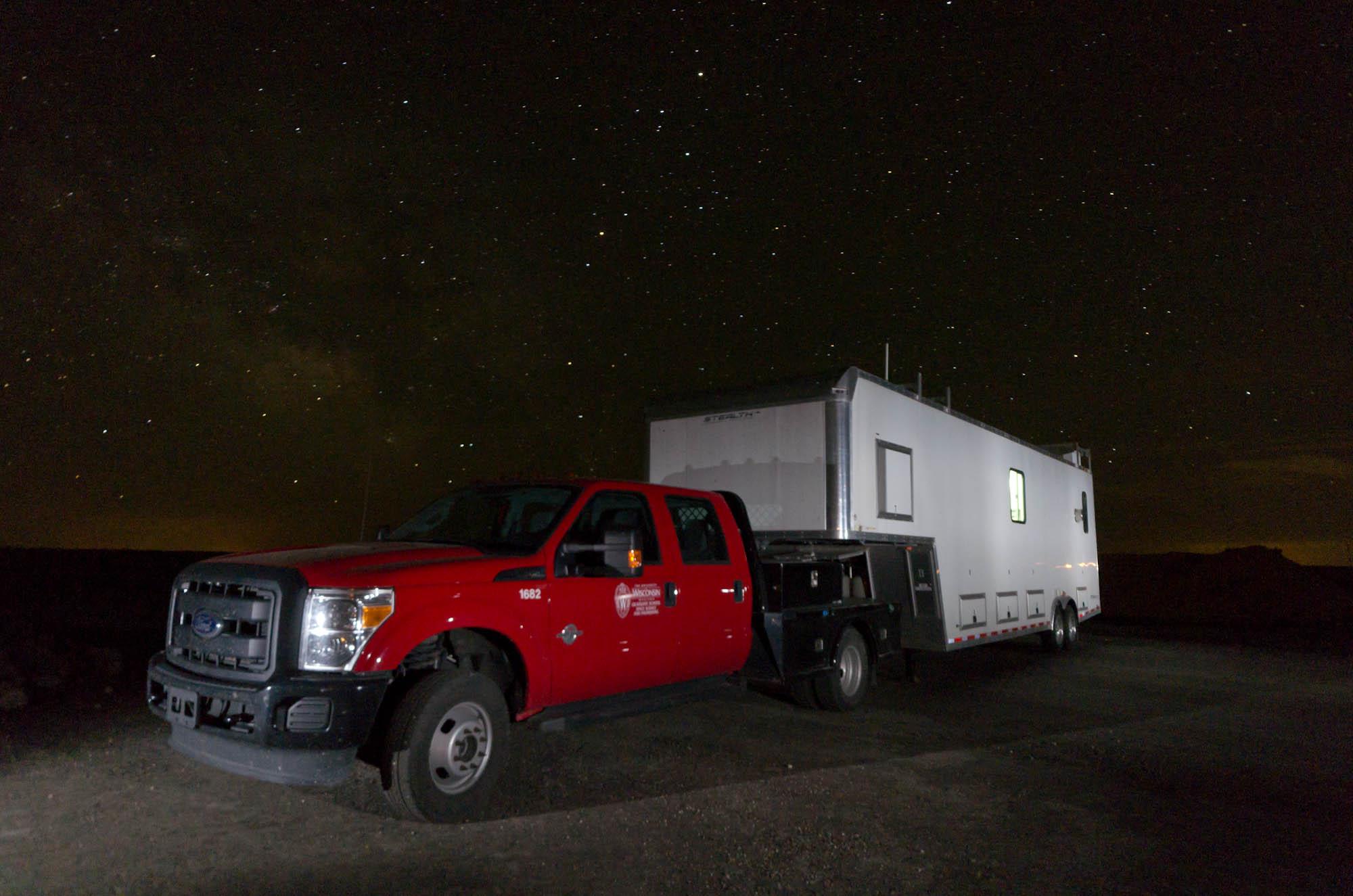Field Photos: Plains Elevated Convection At Night (PECAN) field campaign
Plains Elevated Convection At Night (PECAN) is the second major field campaign for the Space Science and Engineering Center (SSEC) Portable Atmospheric Research Center (SPARC), a specially designed vehicle equipped with a suite of ground-based instruments used for studying the atmosphere.
From 1 June-15 July 2015, the SPARC research team joins hundreds of other scientists (and myriad instrumentation) from around the country in order to learn more about elevated convection and potentially dangerous thunderstorms that form at night – common phenomena in the Great Plains, though poorly understood.
Scientists want to better understand atmospheric conditions that lead to nighttime thunderstorms in order to improve forecasts and public safety. Lessons learned from PECAN may be applied to other regions around the world where similar types of storms develop at night.
The campaign, supported by the NSF, NASA, NOAA, and the U.S. Department of Energy, is the first major coordinated effort of its kind. While PECAN is based out of Hays, Kansas, research teams with mobile units, such as SSEC’s SPARC, will travel with their instruments throughout the region, wherever the nighttime convective weather may take them.
These photos follow the SPARC and its crew as they journey across the Great Plains — at late hours of the night and early morning, and in hard-to-predict weather conditions — collecting as much pre-convective data as possible.

